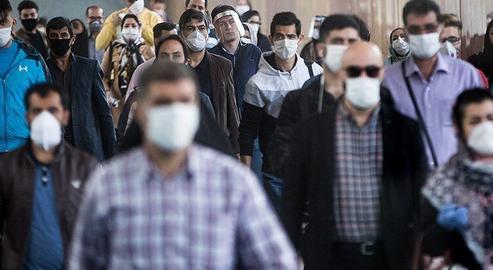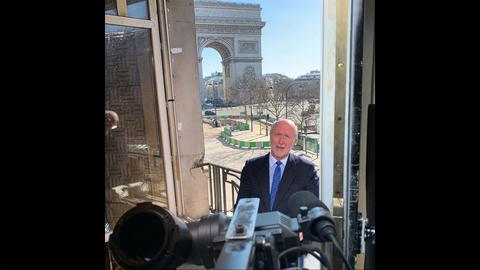In a display of devastating tone-deafness, Iran’s deputy health minister Ghasem Jan-Babaei has publicly claimed that the coronavirus crisis “was not supposed to overwhelm our system and it was the people’s negligence that led to the rise of coronavirus cases”.
In a statement issued on Wednesday, July 15, he said that people needed to be educated about the virus. This begs the question: if people are not “educated”, who but the government is responsible?
Getting the right information to the Iranian people about coronavirus has apparently posed challenge enough for the government. But so too will be the resumption of ordinary school education. On the same day, the Education Ministry announced that the new school year would be a combination of in-person and remote classes – raising immediate logistical concerns. In Golestan province, for instance, six per cent of school-age children, or about 13,000 pupils, have no means of accessing remote classes, not even a TV set. Fifteen percent do not have high-speed internet access and a far greater proportion do not have a smartphone, tablet or laptop.
On the same day as Jan-Babaei’s astonishingly crass comments, President Rouhani also appeared to have lost touch with reality. At a cabinet meeting, he and others were briefed by health minister Saeed Namaki about the areas hit hardest by a second wave of coronavirus infections in Iran: mostly the western, northwestern, south and southwestern provinces, as well as Sistan and Baluchistan in southeast Iran. Tehran, Mazandaran, Razavi Khorasan and Alborz are also currently in a critical situation.
But despite the number of cases being on the rise in provinces across Iran, Rouhani claimed that Iran was already surfacing from the second wave. “We are slowly leaving the peak of the epidemic behind,” he said – belying the fact that a second wave should not have taken place at all. Interestingly, though, in contrast to the sentiments of the health minister, he added: "Fortunately, the observance of protocols and health issues by the people has increased in the last two weeks.”
Warning from Medical Chief
During the first wave of coronavirus cases in Iran, the Iranian Medical Council, an NGO, had issued a number of statements criticizing the government’s management of the crisis and the reliability of official statistics. Dr. Mohammad Reza Zafarghandi, president of the Medical Council, has now issued a fresh warning that medical personnel across Iran are exhausted. He wrote that “herd immunity” is not the solution and the government must give prioritize people’s health and not “normalizing” the situation.
Dr. Zafarghandi pointed out that a major part of the one million euros received from the National Development Fund, allocated to fight coronavirus, had yet to be put into action. Like many other experts, he re-iterated that a major part of decision-making on how to fight infection should be being made at the local level.
Close to 10,000 medical personnel and their coworkers in hospitals have been infected, Dr. Zafarghandi added in a separate interview on July 15. Of these, 9,000 are nurses, of whom 4,000 are undergoing treatment, meaning that they cannot continue work on the frontline.
In his comments on July 15, Jan-Babaei also claimed that the government is spending five billion tomans (close to $1.2 million in official currency exchange rate) a day for testing coronavirus infections and equipping a bed for Covid-19 patients costs from 500 to 600 million tomans ($118 to $142 thousand), although universities of medical sciences receive them for free.
Provinces Round-Up:
In the 24 hours leading up to July 16, close to 900 new coronavirus patients have been hospitalized in Tehran. Considering Tehran’s population and based on the health ministry’s criteria, Tehran should now be considered a “red” zone even though the health ministry still ranks it as “orange”. A week of increased restrictions in the capital came into force on Wednesday, and the health minister noted that if the results fall short of expectations, more restrictions could be imposed.
In the past week an average of two patients have died from coronavirus every two hours in Fars province. The number of cases and fatalities in Fars is rising fast. So too is the number of cases in Mazandaran province, which had a harrowing experience during the first wave of the epidemic in March and for the past 20 days, negligence and the absence of clear policies has led to another jump in the number of coronavirus hospitalizations. In 24 hours, 40 new patients were admitted to hospital in the city of Babol alone.
In her daily briefing, health ministry spokeswoman Dr. Sima Sadat Lari announced that in the past 24 hours, 2,388 new coronavirus cases had been identified in Iran, of which 1,820 patients were in hospital: bringing the total number of officially recorded cases to 264,561. In the same 24 hours, 199 Covid-19 patients died, increasing the official death toll for the pandemic to 13,410.
visit the accountability section
In this section of Iran Wire, you can contact the officials and launch your campaign for various problems



























comments